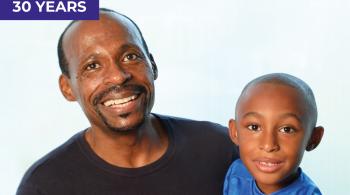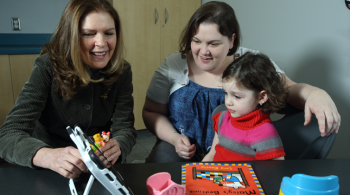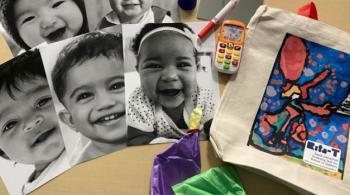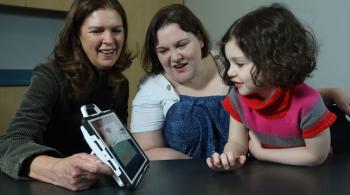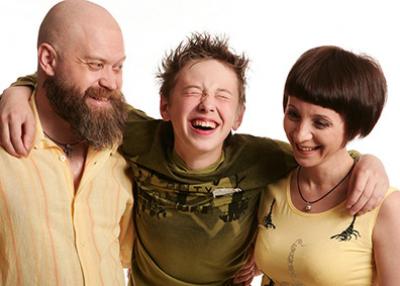 Affection is an expression of love. It can be physical or verbal. And every culture, family and individual human being—adult or child—relates differently to expressions of affection.
Affection is an expression of love. It can be physical or verbal. And every culture, family and individual human being—adult or child—relates differently to expressions of affection.
Many children learn the ABCs—i.e., the basics—of healthy affection from the adults around them, within acceptable social norms for their culture. They also learn about personal boundaries from the adults in their lives.
But individuals have differing levels of need for or comfort with physical touch. Some children have high sensory sensitivity and can be overwhelmed by physical touch—in some cases they can even be overwhelmed by scratchy clothing. Some children express affection in overly demonstrative ways, sometimes violating social norms by becoming overly affectionate. And, some children fall somewhere in the middle.
When an adult’s expression of affection is rebuffed, it is important for the adult not to take it as a personal rejection. Additionally, forcing a child to express affection (e.g., “give grandma a kiss”) can turn affection into a power struggle in which no one wins.
And then there are teenagers, whose developmental task is to separate from parents, reject childlike behavior, and to act more grown up. In the process, many teens may elect to give up expressing or accepting a parent’s physical affection altogether in order to show that they no longer wish to be defined as a child. This can be a tough time for parents, whose once-cuddly kid might suddenly seem allergic to hugs.
Remember, there is always that old verbal substitute for affection. Parents sometimes have to rely on using words to convey empathy, support, interest, approval and appreciation. When the aim is to express emotional warmth and love, just making time to have fun together can take the place of hugs.
It is also important to remember that, regardless of how a child or teen shows or receives affection, each individual still needs to know that he or she is loved and appreciated. That can be a tough task for parents, teachers and relatives.
Across cultures, receptivity to affection can depend on temperament and—in some cases—it can be affected by a diagnosis of autism spectrum disorder (ASD).
“Current statistics predict that one out of every 68 children will be diagnosed with ASD, which typically appears in the first three years of life,” says Dr. Rebecca Landa, director of the Center for Autism and Related Disorders (CARD) at Kennedy Krieger Institute.
For 15 years, Dr. Landa has focused her research on identifying the earliest markers associated with ASD, which is about four times as likely to occur in boys as in girls, and which can occur in association with other disorders.
Though the cause of autism is unknown, and it cannot be cured, structured educational programs geared toward the developmental level and interests of individual children can improve outcomes and quality of life.
Dr. Landa’s quick tutorial of early ASD indicators (see “Bringing the Early Signs of Autism Spectrum Disorders into Focus” on YouTube) is helpful to parents who suspect that their child might be on the autism spectrum. If a child is not showing affection, many parents blame themselves. Understanding your child’s diagnosis will help you as a parent to find the best ways to show affection to your child.
In the meantime, here are some tips on teaching your child the ABCs of healthy affection:
- Be respectful of personal space, which is different for everyone. Respecting personal space is one of the most important behaviors to model when teaching a child about affection. If you respect how they define their personal space, you teach them to (eventually) respect the personal space of others. This will help them adjust socially as they get older.
- Never force a child or teenager to be affectionate if they do not choose to be. To force affection is to set up a power struggle—an undesirable dynamic—between adult and child.
- No ambushes. Sometimes, when a hug or a kiss comes out of nowhere and without warning, a child naturally recoils. Kneel down to their level, smile, open your arms and invite the child into your space. Responses might be more favorable when affection is expressed on a child’s own terms.
- Use small ways to convey affection. Sometimes a thumbs-up, a high-five, hands clapping or just a smile will work to convey love and appreciation.
- Be prepared for harsh reactions to physical affection. Don’t take it personally. Leave it alone, or learn to better read a child’s cues. When relaxed and calm (after a bath or before bed), a child might be ready for a goodnight hug or kiss. Be prepared and don’t feel rejected. This is just your child being him- or herself.
- When it comes to affection, separate your own personal needs as a parent from the needs of your child. Remember: You are the adult, and he or she is the child. It is up to you to pay attention to what is OK and not OK for your child with respect to affection.
Reference:
http://baltimoreschild.com/2017/02/01/teaching-kids-and-adults-the-abcs-of-affection/

